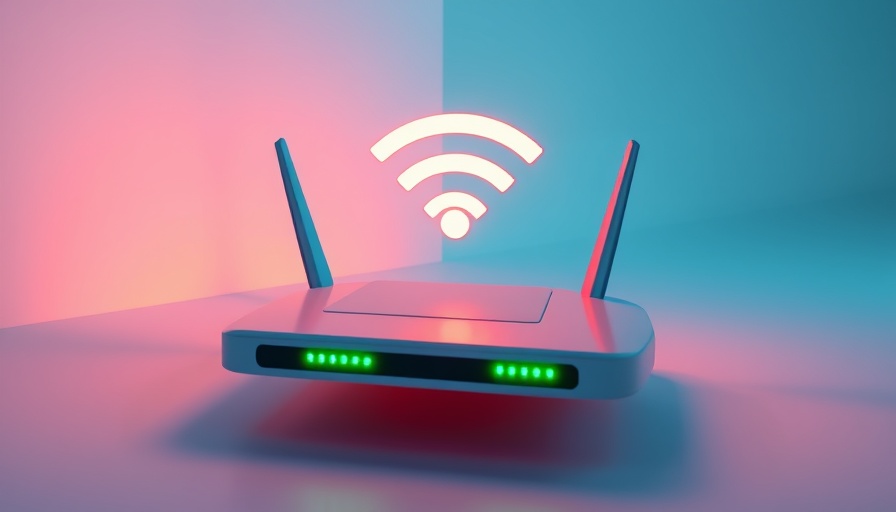
Boost Your Bandwidth: Simple Steps to Upgrade Wi-Fi
In the current fast-paced business environment, having reliable internet connectivity is no longer a luxury, but a necessity. From critical video conference calls to data-heavy applications, seamless Wi-Fi can make or break efficiency in the workplace. Enhancing Wi-Fi is often simpler than one might think. Let’s explore effective methods to boost your internet speed and reliability, especially vital for executives and decision-makers.
Strategically Placing Your Router
One of the most significant yet overlooked factors in Wi-Fi performance is the location of your router. A common mistake is stashing it in a closet or far corner of the office. Walls and large furniture can severely dampen signals. Instead, aim to position your router centrally, preferably elevated, to optimize coverage throughout the space. Don't hesitate to maneuver around your office's design; sometimes the aesthetic placement of your devices can substantially impact their performance.
Moreover, it’s essential to maintain a distance from other electronic devices that may interfere with the signal, such as microwaves, cordless phones, or wireless keyboards. If your router has adjustable antennas, experiment with angling them for maximum signal reach.
Switch to Ethernet: The Speed and Stability Solution
Despite the convenience of Wi-Fi, don’t overlook the advantages of a hardwired connection. Using an Ethernet cable can significantly enhance both speed and stability, providing a hassle-free connection directly to your router. This is particularly beneficial for bandwidth-heavy tasks like video streaming or online gaming, where every millisecond counts.
Although it may require some organization to manage cables, the consistency offered by Ethernet is worth the effort, especially for critical business applications or environments where network interruptions can lead to significant productivity losses.
Understanding Wi-Fi Bands and Channels
Modern routers typically operate over two frequency bands: 2.4 GHz and 5 GHz. Knowing the differences can help streamline your Wi-Fi strategy. The 2.4 GHz band offers wider coverage, making it ideal for general browsing and connecting lesser-demand devices like printers and smart home gadgets. On the other hand, the 5 GHz band provides faster speeds but covers a shorter range and is susceptible to obstacles.
Moreover, interference from neighboring Wi-Fi networks can cause slowdowns, particularly in densely populated areas. Changing your router's broadcast channel can enhance performance. Tools are available to analyze neighboring networks to find less crowded frequencies.
Future-Proofing Your Wi-Fi Network
As technology continues to advance, staying ahead of the curve is crucial. Upgrading to Wi-Fi 6 or even preparing for Wi-Fi 7 can offer significant improvements in speed and connection efficiency, accommodating the growing number of smart devices and demanding applications in the modern workplace. Investing in a high-performance mesh networking system can also extend coverage and eliminate dead zones in larger spaces.
Key Takeaways for Business Leaders
As the digital landscape is continually evolving, it's imperative to periodically assess and upgrade your internet infrastructure. Investing time and resources into optimizing your Wi-Fi can lead to improved productivity, ensuring that your connectivity supports your team's strategic initiatives rather than hindering them. Remember, a fast and reliable internet connection is just as critical as any business strategy.
Stay ahead in this digital age by implementing these actionable insights today for a more effective workspace!
 Add Row
Add Row  Add
Add 




Write A Comment